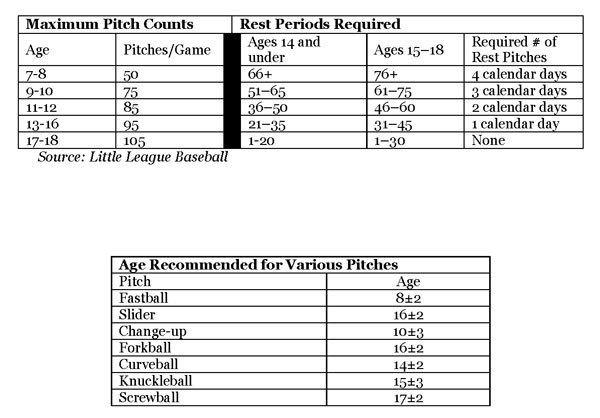Preventing Injuries in the Overhead Throwing Athlete
The act of throwing a baseball is an extremely fast and violent maneuver for the shoulder. It places incredible stress on the joint, unlike stress from other movements or motions on other joints. For each pitch, the thrower must generate high levels of energy in the lower body and trunk to accelerate the ball to top velocity. The muscles and capsular structures of the shoulder must then dissipate this force after ball release and during arm deceleration. To maximize the force generated, the throwing shoulder must strike a balance between adequate laxity (to achieve maximal external rotation during cocking phase) and sufficient stability. (To stop the shoulder from “popping” out of socket during ball release and deceleration phase) The forces generated, and the speed with which this motion occurs, place the stabilizing structures of the throwing shoulder at risk for injury.
HOW CAN OVERUSE BASEBALL INJURIES BE PREVENTED?
Overuse injuries – especially those related to the elbow and shoulder—are preventable.
Some tips to keep you in the game include:
- Warm up properly by dynamic stretching, running, and easy, gradual throwing
- Rotate playing other positions besides pitcher
- Adhere to pitch count guidelines, such as those established by Little League Baseball (See tables)
- Avoid pitching on multiple teams with overlapping seasons
- Don’t pitch with elbow or shoulder pain, if the pain persists, see a doctor
- Don’t pitch on consecutive days
- Don’t play year-round (3-4 months of rest from overhead throwing per year)
- Never use a radar gun
- Communicate regularly about how your arm is feeling and if there is pain
- Emphasize control, accuracy, and good mechanics
- Master the fastball first and the change-up second, before considering breaking pitches
- Speak with a sports medicine professional or athletic trainer if you have any concerns about baseball injuries or baseball injury prevention strategies

Source: From work by James R. Andrews, MD, and Glenn S. Fleisig, PhD
For more information, go to the stop sports injuries website:
http://www.stopsportsinjuries.org/baseball-injury-prevention.aspx
-
McLEOD REGIONAL MEDICAL CENTER FLORENCE
843-777-2000 -
McLEOD DARLINGTON
843-777-1100 -
McLEOD DILLON
843-774-4111 -
McLEOD LORIS
843-716-7000 -
McLEOD SEACOAST
843-390-8100 -
McLEOD CHERAW
843-537-7881 -
McLEOD CLARENDON
803-433-3000



-
McLEOD REGIONAL MEDICAL CENTER FLORENCE
843-777-2000 -
McLEOD DARLINGTON
843-777-1100 -
McLEOD DILLON
843-774-4111 -
McLEOD LORIS
843-716-7000 -
McLEOD SEACOAST
843-390-8100 -
McLEOD CHERAW
843-537-7881 -
McLEOD CLARENDON
803-433-3000
 Find a Doctor
Find a Doctor  Locations
Locations  Services
Services